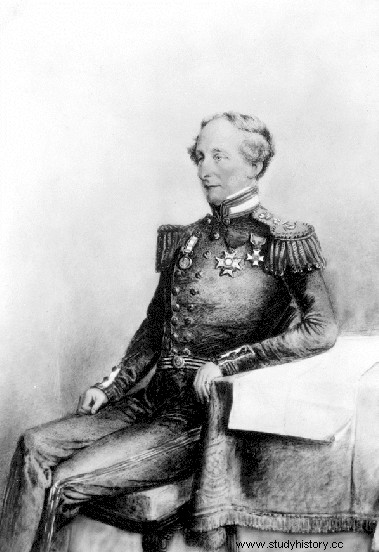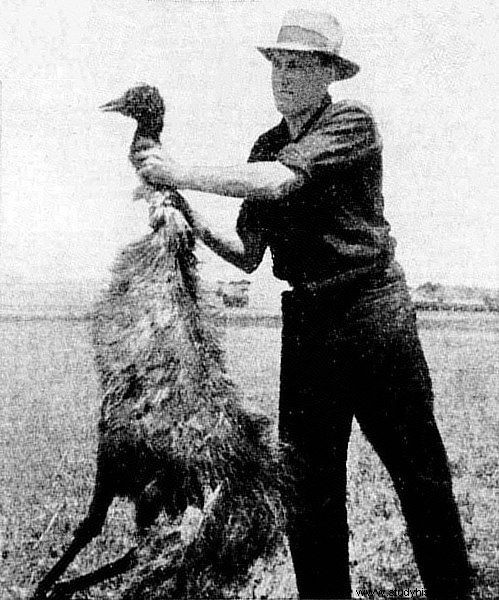A man to a man a wolf? Of course - without it there would be no history of wars and battles. They fought for everything, the pretexts were trivial and the results were meager. Sometimes the opponent turned out to be cleverer too, even though he was not human at all.
It is known that animals are an important element of human life, they also have their place in the history of wars. And we're not just talking about the semi-mythical Trojan Horse.
"pig" wars
Pigs also marked their share in the history of wars. One of them became the source of the conflict between the United States and Great Britain in 1859. There was a misunderstanding about the island of San Juan on the border between the United States and today's Canada.
The Oregon treaty signed in 1846 unclearly defined the nationality of this island. Soon American settlers and merchants from the British Hudson Bay Company began arriving at the same time.
The resulting conflict of interest escalated the long-lasting tension in US-British relations. An unknowing pig pushed both countries to the brink of another war - the property of the Company . The animal harmed the American farmer, which he did not let go of, but shot the pig red-handed. The company reported the incident to the British authorities, which threatened the farmer with arrest. In response, the American settlers received the support of their own army, to which the British responded by sending a squadron of ships to the area of the island.
The situation became dangerous and only the presence of the mind of the British fleet commander, Adm. Robert Baynes prevented the war. Despite the fact that he had a decisive numerical and technological advantage, he did not allow the fighting to break out. Ultimately, on the initiative of President James Buchanan, negotiations and a 12-year joint occupation of the island took place, and the only victim of the conflict was fortunately (though not for her) the pig.

Sir Robert Baynes
The pig problem also gave rise to another conflict - this time in Europe. After the successful assassination of the pro-Austrian king of Serbia, Alexander Obrenovic in 1903, the new Serbian authorities introduced higher tariffs on Austrian goods and concluded a customs union with Bulgaria. All this to minimize economic dependence on Vienna. This, in turn, introduced an embargo in 1906 on Serbian goods, mainly pork - Belgrade's most important export product . To save themselves from the economic collapse, the Serbs established closer relations with France, Germany and Russia, directing their exports to the local markets. This absolutely disliked Vienna and everything was headed for an armed solution. German diplomacy prevented the outbreak of an open conflict at the last minute which forced Russia to suspend its support for the Serbs. On the other hand, Austria-Hungary and Serbia were to agree on the terms of the agreement, which was finally reached in 1911. Thus, the pig cooked in the Balkan cauldron was almost a pretext for the earlier outbreak of World War I. and Archduke Franz Ferdinand would quietly live to a good old age.
War by ... a dog?
The Balkan cauldron deserves such a name for a reason. This is largely due to the Greek-Bulgarian rivalry over the possession of Macedonia and Western Thrace. As a result, it led to many years of struggle, incl. during the Second Balkan War and the First World War. As a consequence, the disputed territories came mostly under Greek control under the Treaty of Neuilly signed in 1919. This solution was unacceptable to the Bulgarian side and the boiling point continued at the borders non-stop. Tired of the fighting, the countries again stood on the brink of war in October 1925, thanks to ... a dog.
A Greek soldier patrolling the borders of the country did not look after his pet, who invaded the enemy side. While saving the pooch from oppression, the Greek was shot by Bulgarian sentries . They regretted the incident, but the Helleni invaded Bulgaria anyway, annexing several border villages. The League of Nations stopped the parties from the outbreak of major fighting. The canine war claimed the lives of around 50 people, mostly Bulgarian civilians.
The Great Emu War
People were able to fight not only through animals, but also with animals. You could only come up with such an idea where everything is upside down… that is in Australia.
In the summer of 1932, the emu herds migrating to the coast each year began to threaten crops in Western Australia. The migrations themselves were nothing strange, but this time their scale was exceptionally large - the number of birds reached up to 20,000 individuals. The farmers asked for military aid . The government sent to the front to fight the plague of three soldiers equipped with machine guns and ... a film crew, which was to capture the deeds of the Australian army. An additional motivation of the Ministry of Defense was the opportunity to practice shooting at extremely fast targets (moving up to 50 km / h).

Farmer with a shot emu bird
The easy campaign started on November 2, 1932 turned out to be a series of failures, not to mention a defeat for the government side . Ostriches not only did not want to accept a general battle, which was clearly pursued by the commander of the punitive expedition, but also jeopardized the shooting skills of Australian soldiers. Even installing a rifle on the truck didn't help. The vehicle in pursuit of ostriches, which, by the way, was too fast for him, drove off the beaten road, and the shooter on the dirt road was unable to fire a single effective shot. On another occasion, when it seemed as if one of the flocks had finally been trapped at the waterhole, the rifle refused to obey and the birds dispersed in a smooth flank motion.
Ultimately, the war with the emu ended on December 10, bringing no glory to the units of the Southern Cross . Reports reported that around 1,000 birds had been killed and a further 2,500 died from their injuries. Given the mass of nearly 20,000 people at the beginning of the war, these numbers can hardly be considered a success. The commander-in-chief of the operation, Maj Meredith, said:
If we had a military division with bullet resistance like these birds, we would defeat every army in the world. They are resistant to machine guns like tanks. They are like Zulus that even dum-dum balls cannot stop.
It is also worth noting that in one of the reports, the major noted that his men did not suffer losses.
Throughout history, mankind has been able to fight even for parsley (literally), wage war for over 300 years and get involved with it in less than 40 minutes. But that's a completely different story.
